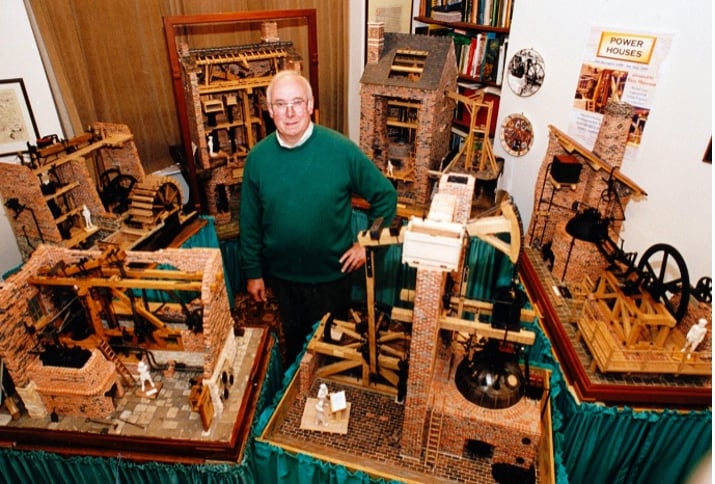A NEW exhibit is to open next week in the Dartmouth Museum, showcasing the impact steam power had on Dartmouth and the discoveries made by Thomas Newcomen.
Newcomen was born in Dartmouth in 1664. He lived and worked in the town all his life with houses and workshops in Higher Street. After an apprenticeship with an ironmonger in Exeter, he returned to Dartmouth and built a successful business supplying the Devon and Cornish tin mines with iron forged tools and equipment.
At some stage, Thomas became obsessed with how the inherent power of steam under pressure could be harnessed to solve the problems with flooding that he saw in his customers’ tin mines.
As a Baptist, Thomas was excluded from academic training at university. However, his practical expertise and natural intelligence enabled him to develop a solution that could be built safely and was distinctive in its approach. For over 10 years, together with his partner the Dartmouth glazier John Cawley, he experimented and applied his thinking, probably in West Country mines. Finally confident, he sold his idea to Lord Dudley, and installed the world’s first working atmospheric engine on his estate near Dudley in 1712.
The exhibit shows the impact of steam power on Dartmouth’s economy and the lives of the people who lived here. It starts with the invention of the first steam powered Floating Bridge ferry, which joined the new Turnpike roads across the Dart in 1831. It goes on to show the many generations of paddle steamers that opened up the river as a tourism experience from 1850; and the long-awaited arrival of the railway in 1864, that brought tourism into Dartmouth, enabling steamships to offer connections to London to their passengers. The story of the engineers at Simpson Strickland, who manufactured advanced steam engines and luxury launches at Noss in the late 19th century is told.
Finally, the impact of the coal business, which supplied the coal that was required by all engines is described, focussing on its impact on coal porters, or “lumpers”, and their families.
David Hulse who has curated the exhibit. Has always had a particular fascination for the history of the Industrial Revolution and the development of the steam engine and in 1974, using the skills he had acquired as an engineer in the ceramics industry, he determined to construct in miniature what he considered to be the most important steam engines of the 18th Century.
This project has taken him over fifty years, but the result is a collection of working models of unparalleled accuracy and detail, which have won many awards and been exhibited in museums and exhibitions throughout the UK.
Dartmouth Museum is a community museum, committed to preserving and exhibiting the fascinating and rich history of Dartmouth and surrounding villages. It is housed in a merchant’s house in the historic Butterwalk and was built in the 1640s.
The Museum welcomes over 7,000 visitors annually from all over the world and is one of the few museums in the South Hams that is open throughout the year. A charity, it is run entirely by volunteers, including 30 stewards, who keep the Museum open 7 days a week.





Comments
This article has no comments yet. Be the first to leave a comment.